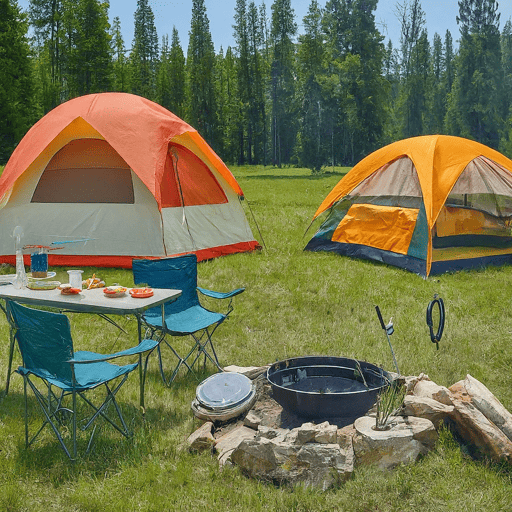Dispersed camping, the practice of camping outside of designated campgrounds on public lands, offers families a unique opportunity to immerse themselves in nature and create lasting memories. This form of camping provides a raw, authentic outdoor experience that can be challenging and rewarding, especially with children. By venturing into the wilderness together, families can forge stronger bonds, develop new skills, and instill a deep appreciation for the natural world in their young ones.
Planning Your Dispersed Camping Trip
The key to a successful dispersed camping trip with kids is thorough planning. Start by researching suitable locations that balance accessibility and wilderness experience. National Forests and Bureau of Land Management (BLM) lands often provide excellent opportunities for dispersed camping. However, it’s crucial to understand local regulations and restrictions, as rules can vary significantly between different areas.
Involve your children in planning to build excitement and a sense of ownership over the trip. Let them help choose the destination, plan activities, or even select some of the gear. This involvement can increase their enthusiasm and make them feel more comfortable with the idea of camping in a remote area.
Essential Gear for Family Dispersed Camping
Regarding gear, focus on items prioritizing comfort, safety, and fun for the whole family. A spacious, family-sized tent or alternative shelter is essential. Consider options that offer separate sleeping areas for parents and children to ensure everyone gets a good night’s rest. Sleeping equipment should be suitable for various weather conditions, as temperatures can fluctuate dramatically in the wilderness.
Remember kid-specific gear such as smaller backpacks, headlamps, and child-sized camping chairs. These items make the experience more enjoyable for children and help them feel like active participants in the camping adventure.
Safety Considerations
Safety should be your top priority when dispersed camping with kids. Assemble a comprehensive first aid kit that includes child-appropriate medications and treatments. Familiarize yourself with basic wilderness first aid techniques and consider taking a course as a family.
Emergency communication devices, such as satellite messengers or personal locator beacons, are crucial when camping in areas without cell phone coverage. Teach your children how to use these devices in case of an emergency.
Staying safe during wildlife encounters is another critical aspect of dispersed camping. Educate your children about local wildlife and storing food properly, and establish clear rules about interacting with animals.
Navigation and Campsite Selection
Involving kids in navigation and campsite selection can be both educational and fun. Teach them how to read maps and use a compass or GPS device. When choosing a campsite, look for a flat area away from hazards like dead trees or steep drop-offs. Encourage your children to help assess potential sites based on criteria you’ve discussed, such as proximity to water sources and natural windbreaks.
Water Management
Proper water management is crucial when dispersed camping. Teach your kids about water purification methods and the importance of treating all water before drinking. Make water conservation a fun challenge by seeing who can use the least amount of water for tasks like washing dishes or brushing teeth.
Food Planning and Preparation
Plan meals that are both nutritious and exciting for kids. Involve them in meal preparation to teach valuable outdoor cooking skills. Proper food storage is essential to prevent wildlife encounters, so ensure everyone understands the importance of keeping a clean camp and storing food securely.
Environmental Education Opportunities
Dispersed camping provides countless opportunities for environmental education. Teach your children to identify local flora and fauna, explain the concept of ecosystems, and discuss the importance of conservation. Incorporate nature-based activities and games to make learning fun and engaging.
Keeping Kids Engaged and Entertained
Balance structured activities with free play time. Bring along age-appropriate games and toys, but also encourage your children to use their imagination and create their own fun with natural materials. Consider assigning each child a special “camping job” to help them feel responsible and involved.
Creating an Eco-Friendly Campsite
Creating an eco-friendly campsite is not only responsible but also provides an excellent learning opportunity for children. Teach them about Leave No Trace principles and involve them in setting up a low-impact camp. Show them how to minimize waste, properly dispose of trash, and respect wildlife habitats.
Conclusion
Dispersed camping with kids offers a unique opportunity to create unforgettable family adventures while fostering a deep connection with nature. By carefully planning, prioritizing safety, and embracing the educational opportunities the wilderness provides, you can create an enriching experience that will leave a lasting impact on your children. As you embark on your family’s dispersed camping journey, remember that the challenges you face together will only strengthen your bonds and create memories that will last a lifetime.

Leave a Reply